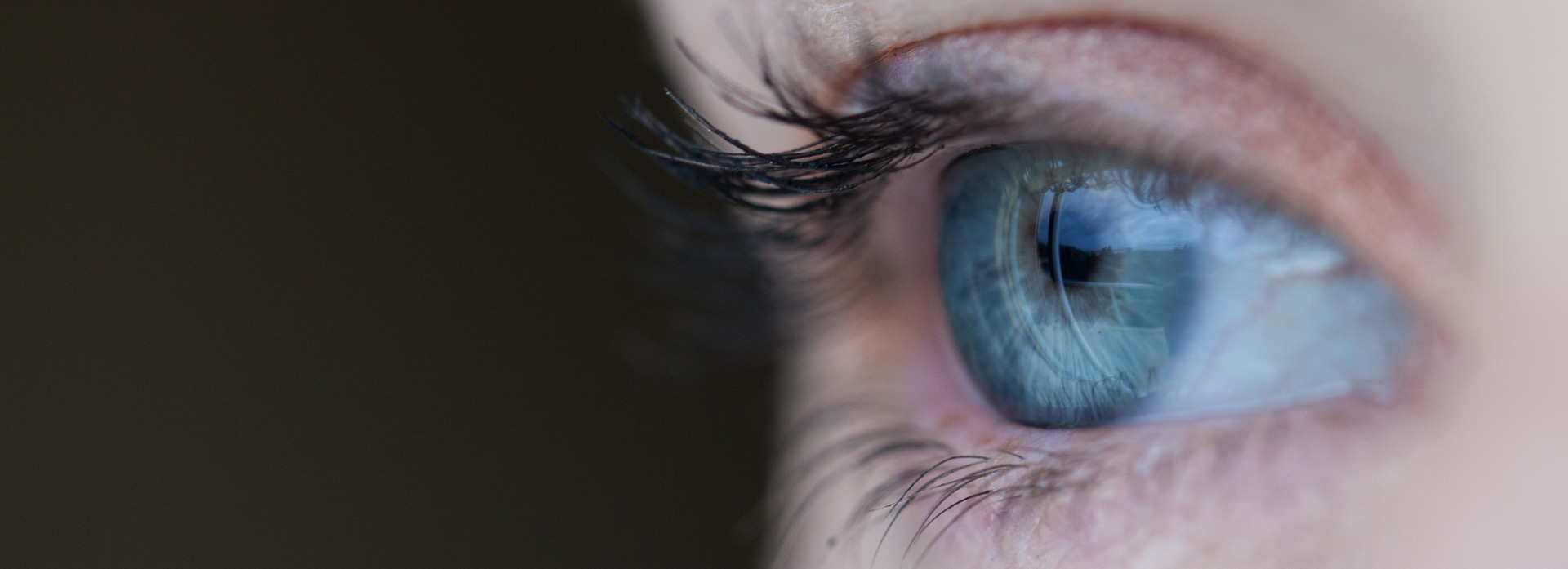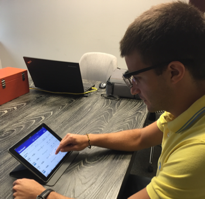
Eye tracking data delivers valuable insights on how your website visitors interact with the page– how long does it take them to discover a specific feature or product on your site, which kind of information they ignore or miss, what your visitors look at and how much time they spend looking at it.
Eye-tracking is the only method in human behavior research rendering it possible to objectively measure and quantify eye movements in real-time. This makes eye tracking an extremely valuable tool when conducting UX research. It provides insight into the ways in which the user is engaging with the content, what captures their attention, where they focus, and what they don’t look at.
With the evolution of computer technology, eye tracking has become a non-intrusive, affordable, and easy-to-use tool in human behavior research that allows measuring visual attention as it objectively monitors where, when, and what people look at. Here is why you should use eye-tracking for website optimization.
What is Eye Tracking?
Most simply, eye tracking refers to the measurement of eye activity. More scientifically, eye tracking implies the recording of eye position (point of gaze) and movement on a 2D screen or in 3D environments based on the optical tracking of corneal reflections to assess visual attention.
Eye-tracking is part of Biometrics, which is a technical term to describe being able to measure body movements and calculations. For instance, one type of Biometric study will use eye tracking to measure and record participants' physiological reactions to the tasks as they perform them.
Using this methodology during UX research it is possible to uncover:
- The visual elements that attract immediate attention
- The visual elements that attract above-average attention
- The visual elements that are being ignored or overlooked
- In which order the visual elements are noticed
Using Eye Tracking is an extremely effective way to provide valuable insight and data when it comes to UX Research, especially in regards to website or web page optimization. Through eye-tracking, one can specifically see where the user is looking, in what order they are looking at things, and for how long. When it comes to website optimization, eye tracking is able to showcase the areas of the web page the user looks at, the areas that are overlooked, and the areas that they spent the most time looking at
Types of Eye-Tracking Tools
It is important to consider the various types of devices with which eye-tracking can be used for research in order to determine which would be the best to use given the goal of the project. There are two different types of eye-tracking devices that are currently available: remote eye trackers (which are also called desktop, stationary or screen-based) and mobile eye trackers (which are also known as head-mounted).
Let’s analyze the key features of each:
Remote eye-tracking technology
These devices require respondents to sit in front of a monitor and interact with screen-based content. Even if remote devices track the eyes only within certain limits (the so-called headbox), the freedom of movement is still sufficiently large for respondents.
Their main features are:
-Record eye movement at a distance
-The device is mounted below or close to a screen
-The respondent is seated in front of the device without attachments
-Recommended for observations of any screen-based stimulus.

Mobile eye trackers
Mobile devices are fitted near the eyes (usually mounted onto eyeglass frames) and allow respondents to move freely. They are particularly recommended if the study design requires performing tasks in a natural environment. On the downside, the glasses might shift during the recording if not worn correctly.
Their main features are:
-Record eye activity from a close range
-The device is mounted onto eyeglasses frames
-The respondent can walk around freely
-Recommended for observations of the object and task performance in any real-life or virtual environment

Measurement Accuracy through Eye Tracking
A common misconception is an inevitable tradeoff between measurement accuracy and freedom of head motion.
Measurement precision is key in eye movement research, making eye-tracking such a valuable tool for UX research.
If calibrated properly, head-mounted eye trackers effectively compensate for any head movements that could impair the signal (and therefore measurement precision). In fact, they can deliver high-precision gaze data just like remote devices.
Eye Tracking Metrics
The most common metrics used in eye-tracking research are:
- Gaze points and fixations: The most prominent metrics in eye-tracking literature. Gaze points are the basic unit of measure. One gaze point equals one raw sample captured by the eye tracker. Gaze points can be aggregated into fixations, a period in which our eyes are locked toward a specific object.
- Areas of interest (AOI) and heat maps: Identify an area of interest (AOI)means concentrating the analysis on specific regions of the stimulus. Heat maps visualize fixation positions and temporal changes of fixations as an overlay on a specific stimulus across different respondents.
- Sequences and further metrics: Is also possible to analyze the fixation sequences and the performance of different regions in an image or a video with respect to the time of first fixation (TTFF) or the number of respondents looking toward a specified region (respondent count).

Let’s evaluate some of the capabilities and limitations of Eye Tracking devices
Capabilities
- Can distinguish whether users are reading or scanning content.
- Identify the relative intensity of a user’s attention to different parts of your web page.
- Determine whether a user is searching for something. Pupil diameter appears to increase when users are not sure what words they are looking for. This can happen when users are on new sites or pages with several categories and information.
- Possible to compare different user groups’ scan patterns.
Limitations
- Impossible to determine whether the users saw something conscientiously. Users can aim their eyes at an area for a short period of time without any awareness.
- Impossible to determine with certainty that users did not see something since eye-tracking does not capture the peripheral vision.
- Impossible to know why users are looking at something.
- Some issues may occur when users wore eyeglasses or hard contacts, had small pupils, a wandering eye, or expressive face.
When we have to determine if eye tracking is the most suitable research methodology for a specific study, it is important to always keep in mind the current limitations and challenges of using this technology.
Eye Tracking for Website Optimization
When it comes to website optimization and UX research, eye tracking is an extremely valuable and useful tool that can provide valuable insight to researchers and designers alike. Through utilizing eye-tracking devices, one can measure how the user engages, takes in, and interacts with the content. Eye-tracking allows the researchers and designers to measure which on-screen features the user notices immediately as well as the on-screen features they miss. It also provides insight into which aspects of the website are successful in terms of usability, and which areas could be improved on by the designers.
Website Eye Tracking Finds and Trends
Past research that has utilized eye-tracking that has been conducted on websites and web pages has uncovered helpful trends to improve website optimization, and also help out designers.
Some of those important finds are:
- Our eyes are naturally drawn to pictures of human faces or people in general. Check out our article on “Eye Tracking: Why Are We Trained to Recognize Other Human Faces?”
- Viewers tend to spend more of their time focusing on/looking at the left side of the page
- Smaller paragraphs and shorter pieces of content are important. If the text or content appears in larger blocks, users tend to skim or skip over it
- Put your most valuable content above the fold of your web page- the top of the page is typically the most viewed portion of the page
Takeaways
In conclusion, incorporate eye tracking in UX research of website optimization can help you to better understand what your users are looking at and what they are (or are not) paying attention to on your website. It can show you what users are immediately drawn to, what features they notice first, areas they spend the most time on and areas they missed entirely. In the specific, mobile eye tracking can help identify subtle changes in attention within the user's’ native environment.
Through incorporating eye tracking as part of your UX research for your website, you can gather effective data that will allow you to enhance your web design so you get more conversions, more long-term readers, and a better overall design, ultimately optimizing your website to provide the best user experience possible.
READ MORE: What Can Eye Tracking Tell Us That We Didn't Already Know?, Eye Tracking Provides Insights into Wearable Device Use, User Research Methods for Automotive User Experience, Choosing the Right Survey Tool for Quantitative UX Research










Comments
Add Comment